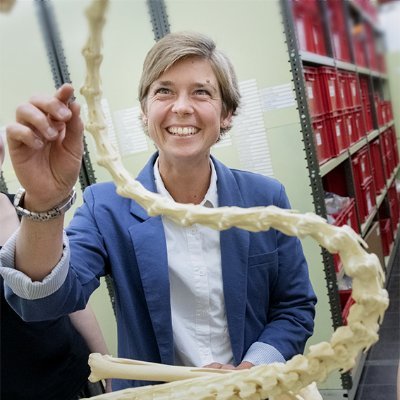Immense size of sauropodomorph dinosaurs necessitated soft tissue pads to reduce the stress within pedal bones.
Jannel et al 2022 @ScienceAdvances Softening the steps to gigantism in sauropod #dinosaurs through the #evolution of a pedal pad
https://t.co/XGYm8iZm9g
Finite element analysis reveals that juvenile tyrannosaurids lacked the bone‐crunching bite of adult specimens.
Rowe & Snively 2021 @AnatRecord
Biomechanics of juvenile tyrannosaurid mandibles and their implications for bite force
https://t.co/a5jNP4eqLs
Arthritis in the jaw of a pliosaur? Evidence of degenerative condition in fossil remains of marine reptile from the Jurassic.
Sassoon et al 2012 Palaeontology: Cranial anatomy, taxonomic implications and #palaeopathology of an Upper Jurassic pliosaur
https://t.co/7lP3zsiNBS
In contrast to terrestrial locomotion that shows substantial variation in gait, different #dog breeds use consistent stereotypic swimming gait. 🐶
Fish et al 2020 @AnatRecord The “dog paddle”: Stereotypic swimming gait pattern in different dog breeds
https://t.co/VjRrrMUr63 https://t.co/KQVHDgUvrP
Ending year 2020 with a study on teeth:
#Narwhals only have one visble #tooth = #tusk. Is it an incisor or a canine? Recent results support canine identity.
Nweeia et al 2012 @AnatRecord Vestigial Tooth Anatomy and Tusk Nomenclature for Monodon Monoceros
https://t.co/Jvu9lS4kwh
Unique feeding behaviour: snail-eating snakes extract soft body of the prey using their mandibles 🐌🐍
Kojima et al 2020 @SciReports Mandibular sawing in a snail-eating #snake
https://t.co/IyEvPLytB2
📹👇Video (from the supplementary material)
https://t.co/BTxPzScng9
#FossilFriday
Absence of very large penguins today is likely due to the Oligo-Miocene radiation of marine mammals.
Mayr et al. 2017 @NatureComms
A Paleocene #penguin from New Zealand substantiates multiple origins of #gigantism in fossil Sphenisciformes
https://t.co/lsypVXeUde











